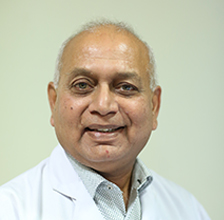Day :
Keynote Forum
Zang-Hee Cho
Neuroscience Research Institute University of Suwon, South Korea
Keynote: 7.0T MRI Super Resolution MR Tractography and its applications
Time : 9:30-10:00

Biography:
Prof. Zang-Hee Cho received Ph.D. from Uppsala University (Sweden) in 1966 and has been faculty at the University of Stockholm and University of California-Los Angeles. In 1979, Dr. Cho moved to Columbia University as a Professor of Radiology (Physics). Since 1985, Dr. Cho was the Professor of Radiological Science as well as professor of Psychiatry and Human Behavior at University of California at Irvine. From 2005, Prof. Cho served as University Professor and Director of the Neuroscience Research Institute, Gachon University of Medicine & Science, Incheon, till he joined as a Distinguished Research Fellow at the Adavanced Institute of Convergence Technology (AICT), Seoul National University, Seoul, Korea. Professor Cho has been a pioneer in Positron Emission Tomography (PET) and Magnetic Resonance Imaging since the inception of the computerized tomography (CT) in 1972. He was the first one who pioneered world’s first "Ring PET", the first molecular imaging device, in 1975. Professor Cho has also been pioneer in the field of MRI. Since 1980 he developed one of the world’s first 0.1T MRI in Korea and subsequently 2.0T in 1985. He then continued one of the world’s first 7.0T MRI coupling with super resolution PET (HRRT) for the world’s first PET-MRI fusion system in 2008. Among the many honors and awards, Professor Cho was elected as a member of us National Academy of Science, institute of medicine in 1997.
Abstract:
Newly obtained super-resolution tractography (SRT) with 7.0T MRI began to allow us to reliably hypothesize some of the neural circuitry too complex to be studied earlier by the conventional connectivity imaging due to the resolution limits. For the first time, with Super Resolution Tractography (SRT), we can now reliably hypothesize one of the most complex and much discussed yet unclear functional circuit, such as the sensory- memory- language- cognition- decision- action (SMLCDA) circuitry. First, based on SRT, we have identified the dorsal language pathways, in conjunction with Geschwind’s territory or the inferior parietal lobe, and proposed Langram hypothesis. In the second, to perform the language translation and subsequent production of the Langram, it is necessary to equip with some form of memory system, therefore, we proposed “Lexicon” hypothesis. The latter, Lexicon, is learning dependent, a nature uniquely human. Thirdly, further downstream, it is assumed that the Langram is utilized in the cognition and decision processes, mostly assumed it is performed in the prefrontal and inferior frontal cortices.
Keynote Forum
Arvind K Chaturvedi
Rajiv Gandhi Cancer Institute and Research Centre, India
Keynote: The dynamics of lung cancer staging: Key features of TNM 8th edition

Biography:
Arvind K Chaturvedi has completed his MD in 1980 and is the Director of Radiology at the Rajiv Gandhi Cancer Institute and Research Centre, New Delhi, India. He also served as the Medical Director of the institute. He has been an expert appointed by IAEA, Vienna in the field of oncological imaging and has been a Visiting Professor to the University of Rochester in 2006. He has authored over 40 scientific papers, 2 book chapters, has delivered over 100 guest lectures in India and abroad. His current interests include radiofrequency ablation of tumors, Body Imaging and optimizing healthcare deliver
Abstract:
Staging cancers is an essential component of oncology practice. TNM staging system provides a common language to communicate on the disease extent of an individual patient. It groups patients with similar levels of disease and similar outcomes together. It is crucial in decision making on management of cancers and predicting prognosis. With advances in treatment and development of new drugs and strategies, the outcomes and survival statistics change over time. As such, there is a need for reviewing the staging system every few years. TNM 8th edition is currently in practice and it has some big changes in staging of lung cancer. The importance of tumor size is highlighted in the new staging system and the T stage descriptor changes with every cm increase in tumor size. Nodal stage has largely remained unchanged but N descriptors have been proposed for future validation. There is no change in M1a, as a departure from the past oligometastases has been recognized as a separate category. Single metastasis in a single organ is M1b while multiple metastases in a single or multiple organ is now M1c. The purpose of this lecture is to look at the rationale behind the changes in staging of lung cancers, getting familiar with the new staging system and the optimal evaluating tools to accurately stage lung cancers
Keynote Forum
Yoshiaki Omura
New York Medical College, USA
Keynote: 3 Recently discovered non-invasive, early, quick, screening & diagnostic methods of early stage of cancers using: 1) visible & invisible changes of organ representation area of face including eyebrows, nose, and upper & lower lips, 2) one page ‘Mouth, Hand, & Foot Writing Form’ completed by each patient, 3) rapidly changing part of QRS-Complex of recorded ECGs

Biography:
Professor Yoshiaki Omura received Oncology Residency Training and a Doctor of Science Degree through research on Pharmaco-Electro Physiology of Single Cells in Vivo and in Vitro from Columbia University. He published over 250 articles and 7 books. He is currently Editor-in-Chief of Acupuncture & Electro-Therapeutics Research, International Journal of Integrated Medicine, and Executive Editor of Integrative Oncology.Using his new diagnostic method, which received U.S. patent, he can non-invasively and rapidly measure many neurotransmitters, chemicals, asbestos, viruses, and bacteria. He developed a non-invasive, quick diagnostic method of malignancies, as well as a method of evaluating the effects of any treatment.
Abstract:
Using organ representation areas of various parts of the body, particularly the face including eyebrows, nose, and upper & lower lips, without knowing anything about the patient, we can non-invasively often estimate potential abnormalities including cancers and cardiovascular problems. When any abnormality exists in specific internal organs, we can always find visible or invisible abnormalities on the corresponding organ representation areas of the face. About 7 years ago, the author found different parts of the eyebrows represent different internal organs. For example, eyebrow nearest to nose represents cardiovascular system. Lateral end area of the eyebrow represents esophagus and stomach. When part of the eyebrow becomes white, it is often early stage of disease. When the problem advances, the hair starts disappearing at corresponding area of eyebrow(s). When there is a malignancy, often abnormal, deep crease or dark pigmentation appears at abnormal organ representation areas of the face. The ala of the nose indicates pancreas & if it has BDORT of -7 or higher negative value, pancreatic cancer must be suspected. If there is a deep, horizontal crease under the lower lip where BDORT is -7 or higher negative value, prostate cancer in male and uterus cancer in female must be suspected. Lips often do not show visible changes but invisible abnormalities can be detected rapidly without touching lips by using non-invasive Bi-Digital O-Ring Test (BDORT), which received U.S. Patent in 1993 because using very sensitive electromagnetic field (EMF) resonance phenomena between 2 identical molecules with identical weight, we can detect almost any molecules as well as any cancers non-invasively. The method was discovered at Pupin Laboratory of Graduate Experimental Physics Lab of Columbia University. Right lower lip near the right corner of the mouth represents colon if there is a colon cancer. If there is a colon cancer, BDORT, without touching the lip, if it’s a negative value of -7 often malignancy can be suspected. In the right upper lip near the midline the stomach is represented. If BDORT is -7 or higher negative value, one must suspect stomach cancer. For left upper lip near midline, if BDORT is -7 or higher negative value, immediately cardiovascular problem can be suspected. Also, when there is a round projection at the center of the chin, it often indicates possibility of ovarian tumor in female and testicular tumor in male. These are described in our latest organ representation chart of the face as well as tongue, hands, and feet. We can often detect these abnormalities by visible changes and at the same time in corresponding abnormal areas there are always invisible changes which can be detected by Bi-Digital O-Ring Test (BDORT), which received U.S. Patent in 1993 for non-invasive, quick detection of any molecules as well as cancers & their metastases. The 2nd method is one-page “Mouth, Hand, & Foot Writing Form”. Filling this form by patient will take about 5-10 minutes. Again, without knowing any information about the patient, we can often detect various medical problems including cancers & their metastases. Each writing contains invisible EMF information that exists at each writing which we can detect rapidly by examining EMF resonance phenomena between these writings and specific cancer slides. The 3rd method is detection of cancers from rapidly changing part of QRS-Complex and also rising part of T-waves of ECGs. This method was also discovered by the author about 3 years ago. As long as time permits, we will show some of these examples
- test

Chair
session1
Session Introduction
Berg B
University Hospital of Basel, Switzerland
Title: Medication related osteonecrosis of the jaw (MRONJ): computer assisted assessment of pathological skeletal changes
Time : 9:30: 10:00

Biography:
Berg B I has compelted her Medical degree at the University of Lübeck and her Dental degree at the Universiy of Freiburg, Germany. Since 2005, she works at the Clinic of Cranio- Maxillofacial Surgery at the University Hospital Basel, Switzerland. Currently, she is in charge of the Dentomaxillofacial Radiology at the Universiy Hospital Basel. In between, she worked in Great Britain (Eastbourne, Brighton), France (Paris) and the United States (New York City). She has authored/co-authored over 20 papers. She has presented over 30 lectures herself and was co-author in over 50 other presentations (national and international).
Abstract:
Medication related pathological changes in mandibular bone due to oncologic treatment are a serious burden. Clear display of the progression of the disease is still a challenge in clinical diagnosis. Therefore, a detailed research project focused on CT-/CBCT-based visualization of necrotic changes was initiated. To start with, all available CT-/CBCT data of the patient are registered on a suitable reference. After several refined image processing and programming steps, the data are subjected to slice oriented direct volume rendering with various (mostly logarithmic) transfer functions specially designed for the respective purpose. For medication related pathological changes, besides destructive skeletal changes, severe sclerosing processes within trabecular structure are reported. Destructive processes correspond to decreased Hounsfield values, whereas sclerosation is indicated by increasing ones. For this purpose, we refer to visualization based on an “inverted temperature color scale”. As kind of control, visualization based on healthy subjects can be considered. Additionally, we compare the affected and the non-affected (or less affected) mandibular side. For healthy controls, the new method provides a clear and uniform appearance of the alveolar ridge. However, for pathological cases, serious changes in trabecular bone are ipsilaterally reported. Considering several follow-up CT data, progression of the described changes over the whole mandible was observed. Recent achievements for computer assisted visualization for necrotic changes in mandibular bone are presented. Besides diagnostic significance, this research is aimed at diagnosis efficiency. The new visualization methods help the surgeon to examine the pathological changes at one glanceMedication related pathological changes in mandibular bone due to oncologic treatment are a serious burden. Clear display of the progression of the disease is still a challenge in clinical diagnosis. Therefore, a detailed research project focused on CT-/CBCT-based visualization of necrotic changes was initiated. To start with, all available CT-/CBCT data of the patient are registered on a suitable reference. After several refined image processing and programming steps, the data are subjected to slice oriented direct volume rendering with various (mostly logarithmic) transfer functions specially designed for the respective purpose. For medication related pathological changes, besides destructive skeletal changes, severe sclerosing processes within trabecular structure are reported. Destructive processes correspond to decreased Hounsfield values, whereas sclerosation is indicated by increasing ones. For this purpose, we refer to visualization based on an “inverted temperature color scale”. As kind of control, visualization based on healthy subjects can be considered. Additionally, we compare the affected and the non-affected (or less affected) mandibular side. For healthy controls, the new method provides a clear and uniform appearance of the alveolar ridge. However, for pathological cases, serious changes in trabecular bone are ipsilaterally reported. Considering several follow-up CT data, progression of the described changes over the whole mandible was observed. Recent achievements for computer assisted visualization for necrotic changes in mandibular bone are presented. Besides diagnostic significance, this research is aimed at diagnosis efficiency. The new visualization methods help the surgeon to examine the pathological changes at one glance
Dawn McDonald
James Paget Hospital, UK
Title: The Toshiba Aplio 400 is a key component in a small local study investigating the potential suitability of elastography in differentiating between benign and malignant breast pathology, its objective to determine a numerical figure that may be significant in aiding the judgement call between benign and malignant lesions
Biography:
Dawn McDonald completed her MSc in Medical Imaging, from Kingston University in 2008, and became a Consultant Mammographer soon afterwards. Working with the same autonomy and professionalism as a Consultant Breast Radiologist, she is responsible for all aspects of breast diagnosis within her unit, including breast interventional and film reading, and works closely with the surgical team. Currently, she is working at the James Paget Hospital in Great Yarmouth UK, and Imperial College London
Abstract:
Benign breast disease is common among women and when symptomatic, surgical management is the preferred option for both clinicians and patients alike (Lakoma and Eugene, 2014). Elastography is a relatively new tool, which still appears to be little utilised in breast imaging. Its use, when applied in the clinical setting, can differentiate between benign and malignant pathology, in particular focal lesions. But how useful is this? And if useful, is it possible to arrive at a numerical value which may determine whether a lesion is likely to be benign or not? A small local study undertaken over one year has suggested that elastography is indeed useful clinically, and that it is possible to arrive at a numerical value which can be significant in differentiating between benign and malignant lesions, as long as it is used in conjunction with other modalities such as mammography and ultrasound. Age is also key factor to be taken account of in the analysis.
Implementation of the technique outlined by this study could significantly reduce the numbers of benign breast biopsy undertaken, resulting in substantially lower financial costs for the medical services, and reducing the number of women suffering the anxiety of unnecessary procedures ultimately leading to benign outcomes
Slobodan Marinković
Belgrade University Faculty of Medicine, Belgrade, Serbia
Title: Radiologic study of the craniovertebral malformations in pituitary duplication

Biography:
Slobodan Marinković has completed his PhD at the age of 31 years at Belgrade University and postdoctoral studies at the Laboratory of Neurophysiology, Panum Institute in Copenhagen (Denmark). He has published 2 international books, four chapters in 2 other books, 8 national books, more than 60 papers in reputed journals and has been serving as an editorial board member of repute. He has about 1 200 citations in international publications. He has given 16 lectures at various international congresses and universities as an invited speaker and has been a chairman person on three occasions
Abstract:
Some congenital malformations are so rare that any new case should be described in detail. We had the opportunity to examine a patient with the hypogonadism, obesity, and some limitation of the neck rotation. The T1-weighted magnetic resonance imaging (MRI) of the brain showed two pituitary glands, each of them with its own pituitary stalk. In addition, the region of the median eminence, i.e. the posterior part of the tuber cinereum and infundibulum, was thicker than usual and was fused with the mammillary bodies. Just left to the fusion, a small suprasellar hamartoma was noticed. The multislice computerized tomography (MSCT) presented a double hypophyseal fossa, the posterior clinoid process, the odontoid process and the axis body, as well as a broad clivus, an inverse foramen magnum, the third occipital condyle, a foramen transversarium defect, a partial agenesis of the anterior and posterior atlas arches, and a fusion of the first four cervical vertebrae. The third condyle measured 12.9 mm × 10.8 mm. The gap between the right and left remnants of the anterior arch measured 22.7 mm, and the missing middle part of the posterior arch had a transverse diameter of 26.1 mm. The right and left odontoid processes were 7.7 mm and 8.6 mm in height, respectively, and the cleft between their apical parts measured 3.7 mm in the transverse direction. Since our patient is one of only 40 reported individuals with a pituitary duplication in the last 150 years, the case description is of a great scientific and clinical significance.
Zoya Vinokur
New York City College of Technology, USA
Title: A study of cultural competence and implicit bias amongst healthcare students

Biography:
Professor Zoya Vinokur is an alumn of New York City College of Technology. Professor Vinokur teaches Radiographic Procedures and Clinical Education. She received her Bachelor of Science degree from Long Island University, C.W. Post, her Master of Science degree in Health Services Management and Policy from New School University and holds advanced certification in mammography. With over 20 years of professional and teaching experience she has taught a variety of courses in the medical imaging discipline including, Radiographic Procedures and Positioning, Pediatric Radiography, Advanced Medical Imaging II in a baccalaureate degree program, and Clinical Education. Professor Vinokur worked in major Metropolitan Hospitals in New York and New Jersey she brings her extensive knowledge and background to the classroom as well as in to clinical settings. She is licensed to practice in both New York and New Jersey States
Abstract:
Cultural competence is defined as the ability of providers and organizations to effectively deliver equitable and unbiased health care that meet the social, cultural, and linguistic needs of a culturally diverse patient body. By 2050, minority populations will increase to 48 percent of the US population and Hispanics will represent 24.4 percent of the total population (US Census, 2010). This demographic shift brings challenges and opportunities to universities and organizations alike to create policies and curriculums that foster quality health care amongst students, while also contributing to the eradication of implicit biases that may unwittingly perpetuate healthcare disparities amongst racial and ethnic minority groups. Our research looks to answer the critical question of whether health care students are adequately prepared by their universities to deliver healthcare services that are culturally competent and sensitive? Are students aware of the importance of implicit biases and what measures can be taken on an institutional level to ensure that healthcare students are adequately prepared to deliver equitable healthcare to all minority groups? This study looks to gauge the understanding of cultural competence amongst a group of City Tech healthcare students by utilizing a cross-cultural survey of cultural competence questions dealing with poverty, age, stereotypes, illiteracy, homophobia, language, religion, and racism. Our data and research results suggest that many health care students are not able to properly define, nor fully implement cultural competence and sensitivity in their clinical settings. This data is significant because administrators and educators need to incorporate more learning strategies and relevant clinical training so that students may enter the work force better equipped to deliver the highest quality of care to all patients, regardless of race, ethnicity, cultural background, English proficiency or literacy
